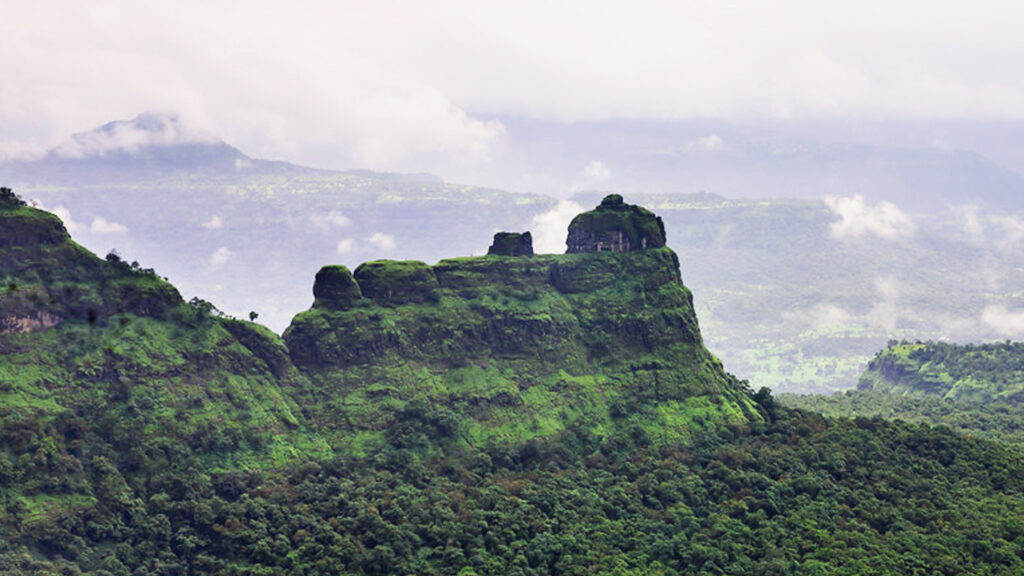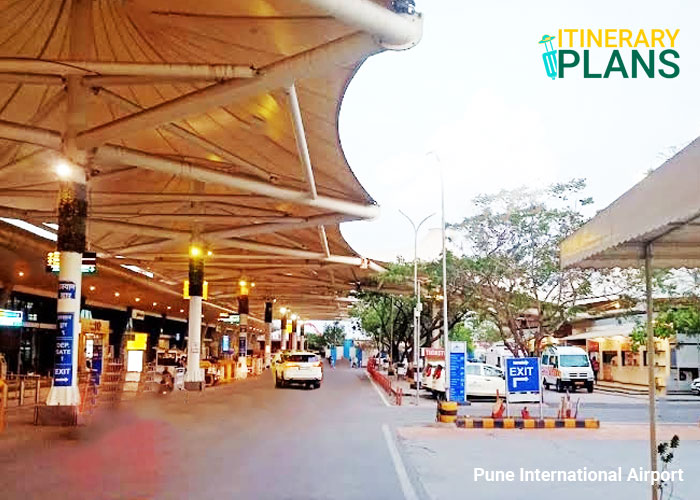Hey travel lovers, welcome to our Itinerary Plans. We know how passionate about travel you are, but because of time shortages can’t manage all things on behalf of you. Caring about your time we create itinerary plans for you. In this guide, you will learn everything you should know about the Bhimashankar Trek before going there.
This article included: Things to do in Bhimashankar Trek, how to reach, where to stay, bhimashankar Trek itinerary, transportation, restrictions, currency, language, and important tips for travel Bhimashankar Trek. So, Let’s start to read the full blog.
Table of Contents
Trail Information
- Address: 3GCP+Q7P, Bhimashankar, Maharashtra 410509, India
- Altitude: 3,050 ft
- Time takes: 3.5 hours via Shidi ghat (ladder), and 4 hours via Ganesh ghat. 2 hours to descend
- Trek gradient: Moderate _ Difficult
- Water sources: None. Carry 1 or 2 liters of water. You can replenish your water bottles from seasonal streams during the monsoon.
- Best Time: spring (March-May) or winter (November-February) seasons
Bhimashankar Trek is a popular hiking trail in the Western Ghats of Maharashtra, India. It is a moderate to difficult trek that takes about 4-5 hours to complete. The trail passes through dense forests, waterfalls, and open meadows. The destination is the Bhimashankar temple, which is dedicated to the Hindu god Bhima.
Location
The Bhimashankar Trek is located in the Bhimashankar Wildlife Sanctuary, which is about 120 kilometers from Pune, Maharashtra. The nearest town is Lonavla, which is about 30 kilometers from the starting point of the trek.
Map
History
The Bhimashankar temple is believed to be over 1,000 years old. It is one of the 12 Jyotirlingas, which are sacred shrines of the Hindu god Shiva. The temple is built on a hilltop overlooking the surrounding forests.
There are two main routes to the Bhimashankar temple. The routes to Shidi Ghat and Ganesh Ghat. The Shidi Ghat route is more challenging, as it involves climbing a series of steep steps. The Ganesh Ghat route is easier, as it is a gradual ascent.
Best Time to Visit Bhimashankar Trek in Maharashtra
Travelers should consider factors such as budget, time constraints, and personal preferences when choosing their mode of transportation to Bhimashankar for the trek.
The best time to visit Bhimashankar for trekking is during the winter or spring seasons, between October and March. During these months, the weather is pleasant and sunny, with temperatures ranging from 15 to 25 degrees Celsius. The trail is also less crowded during this time.
Winter (October to February)
Winter is the most popular time to visit Bhimashankar for trekking. The weather is cool & refreshing, Temperature ranges from 10 – 20 degrees Celsius. The skies are clear, and the views are spectacular. This is also the time when the Bhimashankar Waterfall is at its fullest, making it a popular spot for swimming and photography.
Spring (March to May)
Spring is another great time to go on a Bhimashankar trek. The temperature is between 15 and 25 degrees Celsius, making for a nice and warm climate. The trees are in bloom, and the forests are lush and green. This is a nice time to enjoy the natural beauty of this area.
Summer (June to September)
The summer months are hot and humid, with temperatures reaching up to 40 degrees Celsius. The trails can also be dry and dusty during this time, making it difficult to hike. However, if you are looking for a challenge, the summer season can be a good option.
Monsoon (June to September)
The monsoon season is the least popular time to go on a Bhimashankar trek. There is a chance of landslides, and the trails can be muddy and treacherous. However, Bhimashankar waterfalls are at their fullest during this time, making it a good option if you are interested in seeing them.
Trek start in Karjat’s Khandas Village
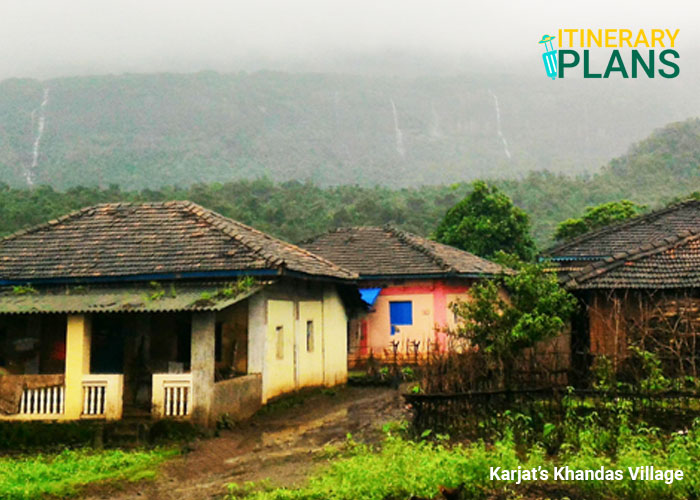
Bhimashankar, which is 275 kilometers away from Mumbai by road, is a great weekend destination for the laid-back. The Bhimashankar Sidhi Ghat Trek is a strenuous 4.5-hour hike from Khandas village that reaches an elevation of 3250 feet. It’s an exercise in mental fortitude as well as physical endurance for our joints and muscles.
Ascent via Shidi Ghat:
It’s a leisurely stroll for the first 20 minutes following the T-junction. After around 20 minutes, you approach a brook. After crossing the brook, the trail climbs for around 40 minutes to the first ladder. You swiftly go to the next ladder after climbing the first one. After climbing the second ladder, you can unwind for a moment in the cave. This location provides breathtaking views of the valley below.
Huge rocks are scattered in a region just after you pass ladder 3. You must proceed through this area with utmost caution. A rope is not required, although it will be useful in this situation.
The trail merges with the Ganesh Ghat trail just after this stretch. This indicates the halfway point. Refreshments are sold by residents in a few huts.
Ascent via Ganesh Ghat
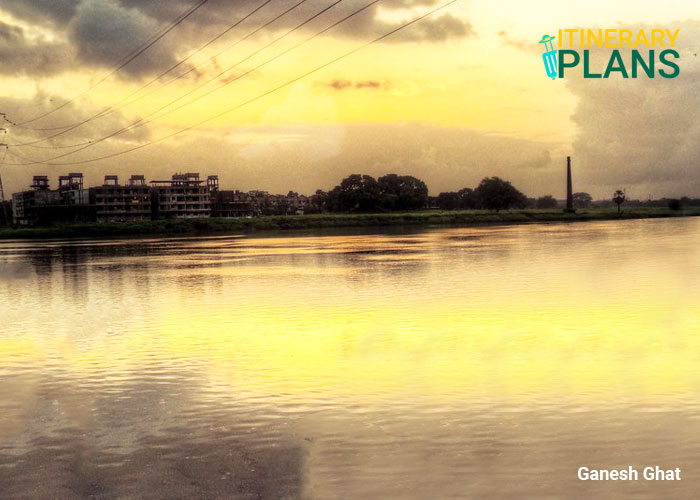
The Ganesh Ghat route to Bhimashankar is a shorter, more gradual alternative to the Shidi Ghat. It’s around 15 kilometers long and takes about 4-5 hours to complete. While it may not be as challenging, it offers its own unique charms:
The initial ascent is a gentle walk through dense forest, followed by a gradual climb through meadows and rocky sections. No relentless stair battles here!
The route passes alongside a stream and waterfalls, offering refreshing breaks and stunning views. You might even spot some wildlife like monkeys or deer.
You’ll encounter an old temple dedicated to Lord Ganesh, adding a touch of history and serenity to your trek.
Panoramic Views: Though not as dramatic as Shidi Ghat, the Ganesh Ghat still rewards you with breathtaking vistas of the surrounding valleys and hills.
Overall, the Ganesh Ghat is a perfect choice for those seeking a scenic and enjoyable trek to Bhimashankar, without the extreme physical demands of Shidi Ghat. It’s ideal for families, nature enthusiasts, and moderate trekkers looking for a beautiful escape.
khandas to bhimashankar trek distance
The Khandas to Bhimashankar trek spans approximately 22 kilometers, taking adventurers through scenic landscapes and challenging terrains. This trekking route is renowned for its diverse topography, including dense forests and rocky paths, culminating in the spiritual ambiance of the Bhimashankar Temple. Trekkers can expect an invigorating journey with breathtaking views along the 22-kilometer trail.
Lonavala to Bhimashankar Trek
On the thrilling Lonavala to Bhimashankar trek, a 60-kilometer journey of scenic trails and challenging terrains. Trekking enthusiasts can revel in the lush landscapes, ancient stone paths, and the spiritual ascent leading to the revered Bhimashankar Temple. Experience the fusion of adventure and spirituality on this iconic trekking route.
Bhorgiri to Bhimashankar Trek
The Bhorgiri to Bhimashankar trek is a captivating 20-kilometer expedition through the Sahyadri Range. Trekkers traverse ancient trails, uncovering the historic Bhorgiri Fort before reaching the spiritual haven of Bhimashankar. This scenic trek offers a perfect blend of adventure and cultural exploration amidst the picturesque landscapes of Maharashtra.
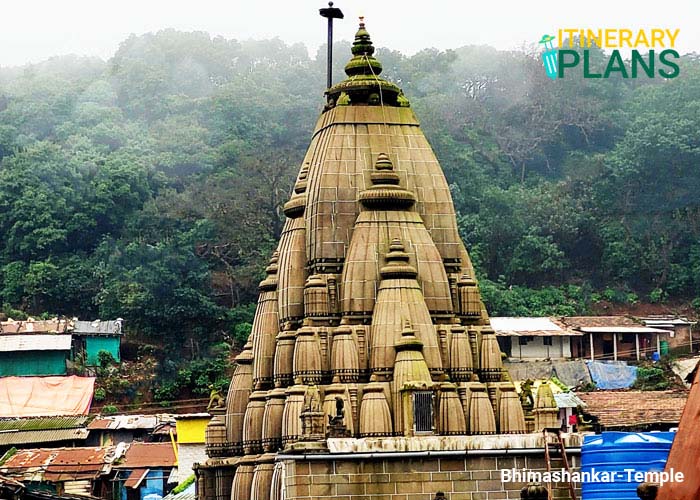
Set out on a virtual journey with stunning Bhimashankar trek photos, showcasing the breathtaking landscapes and spiritual allure of this iconic trekking route. Immerse yourself in the imagery of lush greenery, rugged terrains, and the sacred Bhimashankar Temple, as each photo captures the essence of the trekking adventure. Let these visuals transport you to the heart of the trek, offering a glimpse of the natural beauty and pilgrimage experience that defines Bhimashankar.
Bhimashankar Trek Itinerary
Here’s a detailed itinerary for the Bhimashankar Trek, including Day One and Day Two:
Day One
- Arrival and Check-in: Arrive at the base of the Bhimashankar Trek, either at the Shidi Ghat or Ganesh Ghat trailhead. You can choose from various accommodation options, including hotels, guesthouses, and homestays.
- Evening: Explore the nearby town or village, interact with locals, and enjoy a traditional meal at a local restaurant.
- Rest: Get a good night’s sleep to prepare for the trek ahead.
Day Two
- 06:00 AM: Wake up, have a light breakfast, and pack your essentials for the trek.
- 07:00 AM: Begin your trek from the chosen trailhead – Shidi Ghat or Ganesh Ghat.
- 09:00 AM: Take a break at a designated spot and enjoy a packed lunch.
- 12:00 PM: Continue your trek, enjoying the scenic beauty and natural surroundings.
- 02:00 PM: Reach the Bhimashankar Temple. Take some time to explore the temple, admire its architecture, and offer prayers.
- 03:00 PM: Have a satisfying lunch at a local restaurant near the temple.
- 04:00 PM: Take a refreshing dip in the Bhimashankar Waterfall, located near the temple.
- 05:00 PM: Start your descent back to the trailhead.
- 07:00 PM: Reach the trailhead and check back into your accommodation.
- Evening: Relax and enjoy a traditional dinner at a local restaurant.
- Rest: Get a good night’s sleep after a day of adventure.
Nearby Attractions to Bhimashankar Trek in Maharashtra
- Bhorgiri Fort:
Explore the historic Bhorgiri Fort, nestled in the Sahyadri Range, offering not only a glimpse into the past with its ancient architecture but also panoramic views of the surrounding landscapes.
- Gupt Bhimashankar:
Uncover the hidden marvel of Gupt Bhimashankar, known for its sacred cave and serene atmosphere, providing a unique spiritual experience for pilgrims and nature enthusiasts alike.
- Hanuman Lake:
Discover the tranquility of Hanuman Lake, a picturesque water body surrounded by lush greenery, offering a peaceful retreat for those seeking solitude in nature’s lap.
- Bhimashankar Wildlife Sanctuary:
Immerse yourself in the biodiversity of the Bhimashankar Wildlife Sanctuary, where dense forests and diverse flora and fauna create a haven for wildlife enthusiasts and eco-conscious travelers.
- Pune City:
Extend your journey to Pune, Maharashtra’s cultural hub, known for its historical landmarks, vibrant markets, and modern amenities, providing a perfect blend of tradition and urban sophistication.
Tips for visitors to the Bhimashankar Trek
Here are some tips for visitors to the Bhimashankar Trek:
Preparation:
Choose the Right Route: The Bhimashankar Trek has two main routes: Ganesh Ghat and Shidi Ghat. Ganesh Ghat is the easier route, while Shidi Ghat is more challenging. Select the route based on your expertise and degree of fitness.
Pack Appropriately: Pack comfortable hiking shoes, clothes that can be layered for different weather conditions, a raincoat, sunscreen, a hat, sunglasses, and a first aid kit.
Stay Hydrated: Carry enough water for the trek. There are no water sources on the trail, so you’ll need to be self-sufficient.
Fuel Your Body: Pack enough snacks and food to keep you energized throughout the trek. High-protein and high-carbohydrate snacks are ideal.
Inform Someone of Your Itinerary: Let someone know where you’re going and when you expect to be back. This is especially important if you’re trekking solo.
Respect the Environment: Leave no trace of your presence on the trail. Pack out all your trash and avoid disturbing the wildlife.
During the Trek:
Start Early: The trek gets crowded in the afternoon, so it’s best to start early in the morning.
Pace Yourself: Take your time and don’t rush. The trek is about enjoying the journey, not just reaching the destination.
Be Mindful of Your Surroundings: Pay attention to your surroundings and watch out for slippery rocks and uneven terrain.
Enjoy the Scenery: Take in the beautiful scenery of the Sahyadri mountains and the lush forests.
Respect Local Culture and Traditions: If you encounter any locals, be respectful of their culture and traditions.
Have Fun: The Bhimashankar Trek is a rewarding experience. Relax, have fun, and enjoy the adventure!
How to reach Bhimashankar
The nearest major airport to Bhimashankar is Netaji Subhash Chandra Bose International Airport, Kolkata. It is 464 km away from Bhimashankar.
By Air:
-
Pune-International-Airport Nearest Airport: Pune International Airport
- Distance from Pune Airport to Bhimashankar: Approximately 125 kilometers
- Travel Time: 3 to 4 hours by road (subject to traffic conditions)
- Rental Cost: Varies based on vehicle type and rental service
- Mode of Transport: Taxis and private vehicles can be hired at the airport for direct travel to the trekking site.
Bus:
- Public buses may be available from Pune to Bhimashankar.
- Travel Time: Depends on the bus route and schedule.
- Rental Cost: Generally more budget-friendly compared to private vehicles.
- Mode of Transport: Public buses operated by local transportation authorities.
Train:
- Pune Railway Station is the closest major train station.
- Distance from Pune Railway Station to Bhimashankar: Approximately 110 kilometers.
- Travel Time: Additional road travel is required; total time varies.
- Rental Cost: Taxis and private vehicles can be hired at the railway station.
By Taxi/Car:
- Rental options are available at airports and railway stations.
- Travel Time: 3 to 4 hours from Pune; varies from other locations.
- Rental Cost: Depends on the type of vehicle and rental service.
- Mode of Transport: Private taxis or rental cars provide a convenient and flexible option for reaching Bhimashankar.
FAQs about the Bhimashankar Trek:
Most Dangerous Zone on the Bhimashankar Trek
The most dangerous zone on the Bhimashankar Trek is the Nagfani Pinnacle section. This part involves a steep ascent and descent along a narrow ridge, requiring caution and sure footing. However, with proper preparation and precaution, the Bhimashankar Trek is generally safe for trekkers of moderate to experienced levels.
Can I do the Bhimashankar trek if I have never trekked before?
Yes, the Bhimashankar trek is a moderate trek that is suitable for beginners. The trail is well-maintained and there are no technical sections. However, it is important to be in good physical condition and to have a basic level of fitness.
Where can I get food and water during the Bhimashankar trek?
There are several small villages along the Bhimashankar trek where you can buy food and water. There are also a few restaurants and cafes near the Bhimashankar Temple. However, it is always a good idea to carry your own food and water, as the supply may be limited.
Do I need to obtain permission to trek to Bhimashankar?
No, you do not need to obtain permission to trek to Bhimashankar. The trek is open to the public. However, it is always a good idea to inform the local forest authorities about your trek, so that they can be aware of your whereabouts in case of an emergency.
Where can I get accommodation in Bhimashankar Trek?
There are several lodges and guesthouses near the Bhimashankar Temple where you can stay. You can also camp at the base of the temple. However, it is important to get permission from the local forest authorities before camping.
What are the places to visit near Bhimashankar?
There are several places to visit near Bhimashankar, including:
- Bhimashankar Temple: This is an ancient Shiva temple that is said to be one of the 12 Jyotirlingas.
- hima River: This river is the source of the Bhimashankar Temple’s holy water.
- Nagfani Pinnacle: This is a rock formation that is said to resemble the hood of a serpent.
- Siddhgad Fort: This is a 17th-century fort that offers stunning views of the surrounding area.
Can you tell me about the Bhimashankar mandir?
The Bhimashankar Mandir is an ancient Shiva temple that is said to be one of the 12 Jyotirlingas. The temple is located in the village of Bhimashankar, which is about 120 kilometers from Pune. The temple is believed to have been built by the Pandavas, the five brothers from the epic Mahabharata. The temple is a sacred place for Hindus and is visited by thousands of pilgrims every year.
Is Bhimashankar trek kids friendly? Yes or No
No, the Bhimashankar trek is not kids friendly. The trek is moderate and can be challenging for young children. Additionally, there are no railings or safety nets along the trail, so children could easily fall and injure themselves. It is best to wait until children are older and more experienced before taking them on the Bhimashankar trek.

